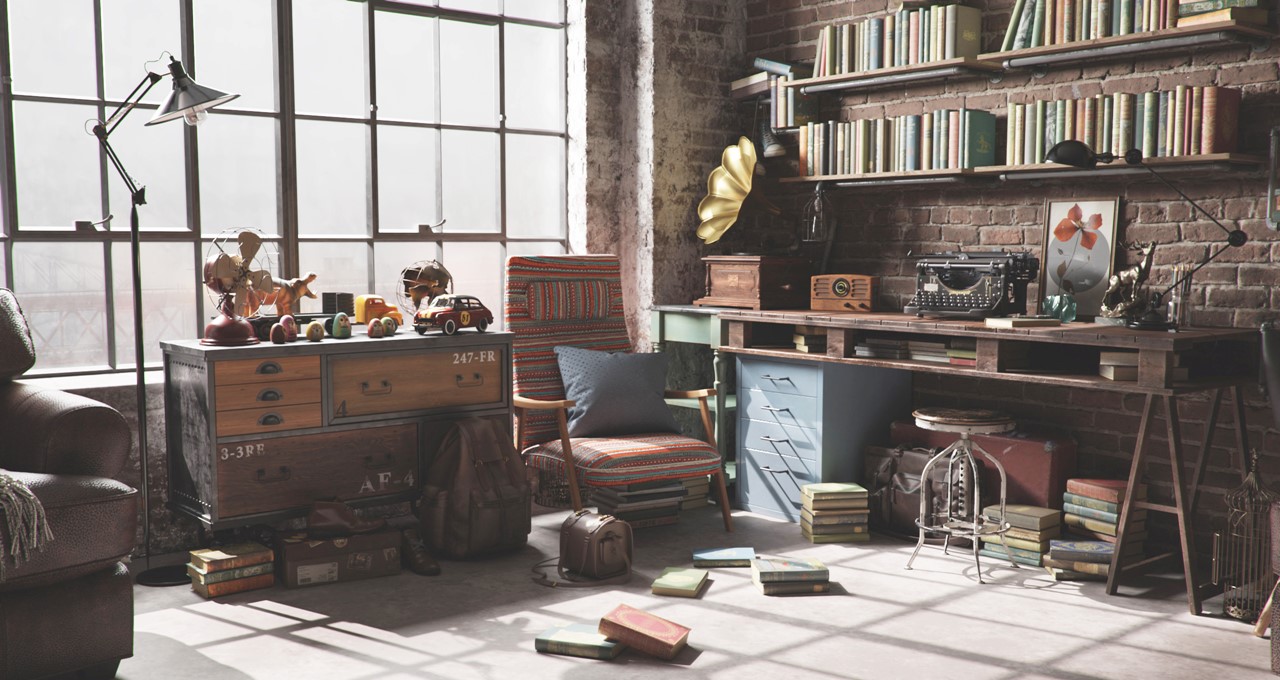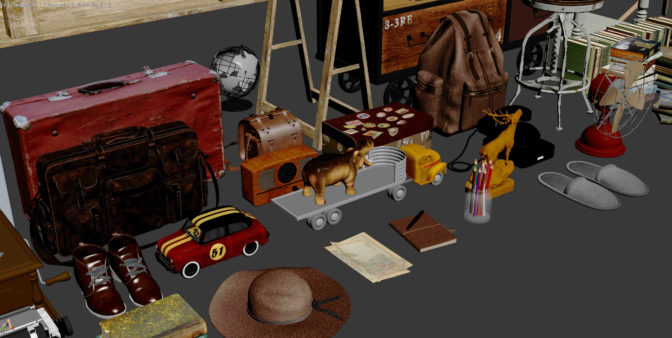Real-time rendering and photorealistic graphics used to be tall tales, but NVIDIA Omniverse has made them fact from fiction.
NVIDIA’s own artists are writing new chapters in Omniverse, an accelerated 3D design platform that connects and enhances 3D apps and creative workflows, to showcase these stories.
Combined with the NVIDIA Studio platform, Omniverse and Studio-validated hardware enable creatives to push the limits of their imagination and design rich, captivating virtual worlds like never before.
One of the latest projects in Omniverse, The Storyteller showcases a stunning retro-style writer’s room filled with leather-bound books, metallic typewriters and wooden furniture. Artists from NVIDIA used Omniverse, Autodesk 3ds Max and Substance 3D Painter to capture the essence of the room, creating detailed 3D models with realistic lighting.
Just for Reference — It Begins With Images
To kick off the project, lead environment artist Andrew Averkin looked at various interior images to use as references for the scene. From retro furniture and toys to vintage record players and sturdy bookshelves, these images were used as guidance and inspiration throughout the creative process.
The team of artists also collected various 3D models to create the assets that would populate and bring mood and atmosphere to the scene.
For one key element, the writer’s table, the team added extra details, such as texturing done in Substance 3D Painter, to create more layers of realism.
3D Assets, Assemble!
Once the 3D assets were completed, Averkin used Autodesk 3ds Max to assemble the scene connected to Omniverse Create, a scene composition app that can handle complex 3D scenes and objects.
With Autodesk 3ds Max connected to Create, Averkin had a much more iterative workflow — he was able to place 3D models in the scene, make changes to them on the spot, and continue assembling the scene until he achieved the look and feel he wanted.
“The best part was that I used all the tools in Autodesk 3ds Max to quickly assemble the scene. And with Omniverse Create, I used path-traced render mode to get high-quality, photorealistic renders of the scene in real time,” said Averkin. “I also used Assembly Tool, which is a set of tools that allowed me to work with the 3D models in a more efficient way — from scattering objects to painting surfaces.”
Averkin used the Autodesk 3ds Max Omniverse Connector — a plug-in that enables users to quickly and easily convert 3D content to Universal Scene Description, or USD — to export the scene from Autodesk 3ds Max to Omniverse Create. This made it easier to sync his work from one app to another, and continue working on the project inside Omniverse.
A Story Rendered Complete
To put the final touches on the Storyteller project, the artists worked with the simple-to-use tools in Omniverse Create to add realistic, ambient lighting and shadows.
“I wanted the lighting to look like the kind you see after the rain, or on a cloudy day,” said Averkin. “I also used rectangular light behind the window, so it could brighten the indoor part of the room and provide some nice shadows.”
To stage the composition, the team placed 30 or so cameras around the room to capture its different angles and perspectives, so viewers could be immersed in the scene.
For the final render of The Storyteller, the artists used Omniverse RTX Renderer in path-traced mode to get the most realistic result.
Some shots were rendered on an NVIDIA Studio system powered by two NVIDIA RTX A6000 GPUs. The team also used Omniverse Farm — a system layer that lets users create their own render farm — to accelerate the rendering process and achieve the final design significantly faster.
Watch the final cut of The Storyteller, and learn more about Omniverse at GTC, taking place on March 21-24.
GTC, which is free to attend, will feature sessions that dive into virtual worlds and digital twins, including Averkin’s talk, “An Artist’s Omniverse: How to Build Virtual Worlds.”
Creators can download NVIDIA Omniverse for free and get started with step-by-step tutorials on our Omniverse YouTube channel. For additional resources and inspiration, follow Omniverse on Instagram, Twitter and Medium. To chat with the community, check out the Omniverse forums and join our Discord Server.


